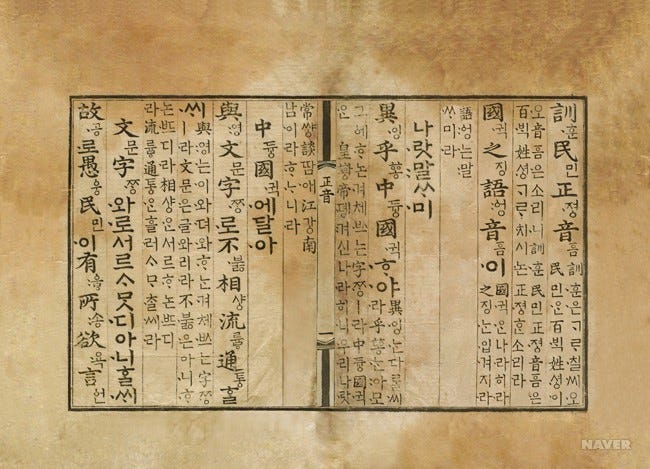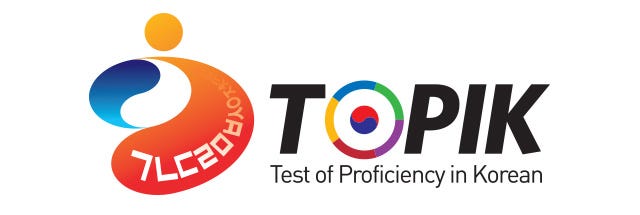Last time I told you about Korean courses, so maybe it is time to talk about the Korean language itself?
Korean language… The Korean language was not so popular…before the Korean wave became a worldwide trend.

Today, I will share with you a few facts about the Korean language. Maybe some of these facts are familiar to you, maybe not.
First of all, the Korean language or Hangeul (한글) was invented in the XV century by the 4th King of the Joseon Dynasty King Sejong Great. Before it, Korean people used Chinese hieroglyphs. Sejong King tried to make the language easy to study or use by any social level. Because, during the Joseon Dynasty poor people couldn’t even read, so they couldn’t learn about any announcements or news which were published on the board. So, Sejong King invented the Korean alphabet. Each letter was derived from people's mouths.
Second, there are 6 levels in the Korean language exam. 1st and 2nd levels are basic levels, 3rd and 4th levels are intermediate, and the last 2 are advanced levels. Actually, it is not easy to get 5 or 6 levels, even for Korean people.

Third, if you travel to different regions in South Korea, you will feel like people have different accents because in different regions Koreans use different dialects. And the strong one is on Jeju Island. People from Seoul can’t understand Jeju people.
Forth, the Korean language is one of the most polite languages. In the Korean language many different types of polite form. It could be shown in the word or sentence ending. Also, according to the level of politeness, maybe used different words. For example, ‘thank you’ can be expressed with the word ‘ko-ma-wo-yo’ (고마워요). It is a basic polite form. ‘Ko-ma-pye-ssyem-ni-da’ (고맙습니다) is the second level of politeness. But with elder people or people of higher positions Koreans use another word ‘kam-sa-hye-yo’ (감사해요) or ‘kam-sa-ham-ni-da’ (감사합니다).
Fifth, there are 2 types of numbers: Korean and Chinese numbers. And Koreans use both of them. But it doesn’t mean that you can use any type of number. There are rules, on when and which type of numbers to use, whether Chinese or Korean.
Many of you maybe want to ask, is it difficult to learn Korean. Well, from my personal experience, I would say, that the Korean language is not easy as any other foreign language. But the Korean language is very unique and interesting. It has something from the Chinese language and Japanese (due to the historical past). Yes, the Korean language is very difficult when you see about 10 Korean words and then try to find their meaning in the Russian or English dictionary, and see the same meaning. So, in that case, it is important to understand in which situation, which word to use.
Today, many people started to study Korean because they fell in love with K-Pop stars. Especially, a big influence had BTS, which became Number 1 in Korea.
Would you like to study Korean?
Korean language… The Korean language was not so popular…before the Korean wave became a worldwide trend.
What do you know about the Korean language?
Many people think that the Korean language is like the Chinese language, and there is no alphabet, only Chinese hieroglyphs.
Today, I will share with you a few facts about the Korean language. Maybe some of these facts are familiar to you, maybe not.
First of all, the Korean language or Hangeul (한글) was invented in the XV century by the 4th King of the Joseon Dynasty King Sejong Great. Before it, Korean people used Chinese hieroglyphs. Sejong King tried to make the language easy to study or use by any social level. Because, during the Joseon Dynasty poor people couldn’t even read, so they couldn’t learn about any announcements or news which were published on the board. So, Sejong King invented the Korean alphabet. Each letter was derived from people's mouths.
Second, there are 6 levels in the Korean language exam. 1st and 2nd levels are basic levels, 3rd and 4th levels are intermediate, and the last 2 are advanced levels. Actually, it is not easy to get 5 or 6 levels, even for Korean people.

Third, if you travel to different regions in South Korea, you will feel like people have different accents because in different regions Koreans use different dialects. And the strong one is on Jeju Island. People from Seoul can’t understand Jeju people.
Forth, the Korean language is one of the most polite languages. In the Korean language many different types of polite form. It could be shown in the word or sentence ending. Also, according to the level of politeness, maybe used different words. For example, ‘thank you’ can be expressed with the word ‘ko-ma-wo-yo’ (고마워요). It is a basic polite form. ‘Ko-ma-pye-ssyem-ni-da’ (고맙습니다) is the second level of politeness. But with elder people or people of higher positions Koreans use another word ‘kam-sa-hye-yo’ (감사해요) or ‘kam-sa-ham-ni-da’ (감사합니다).
Fifth, there are 2 types of numbers: Korean and Chinese numbers. And Koreans use both of them. But it doesn’t mean that you can use any type of number. There are rules, on when and which type of numbers to use, whether Chinese or Korean.
Many of you maybe want to ask, is it difficult to learn Korean. Well, from my personal experience, I would say, that the Korean language is not easy as any other foreign language. But the Korean language is very unique and interesting. It has something from the Chinese language and Japanese (due to the historical past). Yes, the Korean language is very difficult when you see about 10 Korean words and then try to find their meaning in the Russian or English dictionary, and see the same meaning. So, in that case, it is important to understand in which situation, which word to use.
Today, many people started to study Korean because they fell in love with K-Pop stars. Especially, a big influence had BTS, which became Number 1 in Korea.
Would you like to study Korean?
Comments
Post a Comment